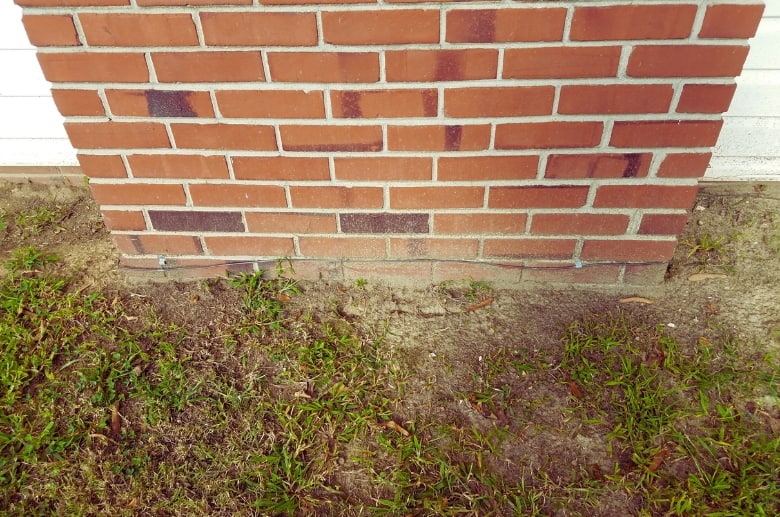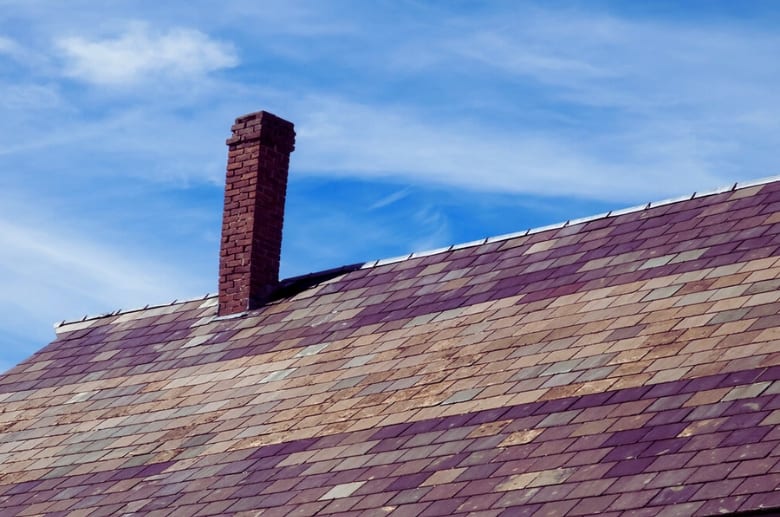When you detect an increase in chimney smoke or spot broken flue tiles and creosote in your fireplace, your chimney flue has likely sustained cracks.
A cracked chimney flue poses a significant danger, allowing smoke and hazardous gases to seep into your home, potentially leading to respiratory problems. Introducing carbon monoxide into your home can mean poisoning or even death. Moreover, a cracked chimney flue frequently contributes to chimney fires that can quickly become catastrophic.
Considering these risks, contacting a certified chimney service is crucial to address the issue if you notice any signs of a damaged flue.
Taking this step not only ensures your family’s safety but also helps prevent expensive repairs. This article will provide comprehensive information about how to repair a cracked chimney flue in easy DIY steps.
How Does a Chimney Flue Get Damaged?
Before running towards your chimney with your toolkit, let’s look at how a chimney flue gets damaged in the first place. There are multiple reasons why your chimney flue might crack.
Poor Maintenance

You or a professional chimney sweep must clean a chimney properly. If your chimney is not cleaned regularly, creosote will form inside the flue. Since proper combustion doesn’t occur in a clogged chimney flue liner (due to an insufficient oxygen supply), more soot and creosote are produced. This turns into a vicious cycle of further chimney damage.
Because creosote is highly flammable, a clogged chimney increases the risk of a chimney fire. And a chimney fire can lead to a house fire. Both types of fires put your family at severe risk.
Corrosion From Moisture
Moisture is a big no-no for chimneys. Once moisture makes its way to your chimney’s flue (either through leakage or poor construction), it will destroy it. How so? In winter, the water freezes, creating additional space in the flue. In the summer, the frozen water melts and seeps inside these spaces.
Once water seeps inside the chimney from tiny cracks, water molecules disintegrate the chimney flue tile (made of terracotta clay, concrete, or galvanized steel). Thus, the chimney flue’s structure starts to crumble. These defects might take some time to notice.
Fireplace Heat Causes Thermal Expansion And Contraction
When your fireplace is up and running, the temperature inside your chimney reaches 450 degrees Fahrenheit or more. Such a high temperature causes thermal expansion of the chimney flue. But when you turn off the fireplace or close the damper on the wood stove, the fireplace cools down, and the chimney flue begins to contract.
This cycle of expansion and contraction repeats over and over again for years, eventually putting enough strain on the chimney flue to crack it.
Damaged chimney foundation

The foundation is an important part of your chimney. If the foundation is unstable, it will cause the chimney to lean, leading to cracks in the flue. Once your chimney flue begins to crack, water seeps inside and further deteriorates it.
Dangers of a Cracked Chimney Flue
As mentioned above, a cracked chimney flue is dangerous. Here’s why:
Carbon Monoxide Poisoning
When coal or wood is burned, it releases harmful gases, including carbon monoxide. A functioning chimney flue transports these gases outside. But if the chimney flue is cracked, carbon monoxide leaks into your house, potentially causing carbon monoxide poisoning.
If carbon monoxide leaks into your room, you’ll feel dizzy and nauseous. You might even get a headache. But you’ll feel drowsy, confused, and lose consciousness after some time. If you don’t get out of the room fast, carbon monoxide can kill you.
Health Concerns From Soot Inhalation
Apart from carbon monoxide poisoning, a cracked or broken flue will allow soot (a black, tar-like substance) to enter your house. Inhaling these soot particles can cause respiratory problems such as bronchitis, asthma, and coronary heart disease.
Leaning Chimney & Fire Hazard

A chimney with a cracked flue will lose its integrity with time. This may cause it to lean and eventually collapse, possibly hurting you and your loved ones or leading to serious property damage.
It can also cause your house to burn! Since it’s cracked, hot embers may find a way out of the chimney. A fire may erupt upon contact with flammable objects near the chimney (such as walls, ceilings, attics, and framing). This can cause your house to go up in flames.
Can You Use a Fireplace With a Cracked Flue?
You should not use your fireplace if you suspect cracks in your chimney flue. If you do, there’s a risk of igniting a chimney fire. A cracked flue will be unable to keep the fire, embers, and smoke inside.
There’s also the possibility of carbon monoxide poisoning. Carbon monoxide is colorless and odorless. So there is no way of knowing you’re under threat, making it all the more dangerous.
You should never use your fireplace if your chimney flue is cracked. Instead, call a professional chimney sweep to inspect and repair your chimney flue.
Signs of a Cracked Chimney Flue
We know a cracked chimney flue is dangerous and should be repaired immediately. But how do you know your chimney flue is cracked? Here are a few signs to watch out for:
- Crumbling chimney flue bricks or debris in the fireplace.
- Chipped chimney tiles.
- Uneven flames or a struggling fire in your fireplace.
- Excessive smoke in the house.
- Unusual creosote buildup inside the chimney flue, resulting in a blocked chimney.
- An unpleasant odor or dark chimney smoke.
- Water or moisture on the chimney exterior.
- Discoloration on the exterior of your chimney.
How To Repair a Cracked Chimney Flue?
Disclaimer: Repairing a cracked chimney flue is difficult and can be dangerous. While following through, you might worsen things, hurt yourself, or inhale harmful gases. It is best to seek a professional to repair your damaged chimney flue.
But if you want to fix it yourself, it’s important to wear goggles, a mask, and safety gloves to prevent damaged tiles, mortar, and gases from harming you.
Materials Required
Here’s a list of the materials you need to repair your chimney flue.
- Brush with connecting rods
- Small hand brush
- Vacuum cleaner
- Newspapers
- Chimney cleaner spray
- Sealant
- Heat-resistant mortar
- Chimney crown sealant
Fixing a Cracked Chimney Flue
Let’s go over the steps involved in fixing a cracked chimney flue:
Step 1. Inspect the Chimney
First, determine the extent of the damage. Use a flashlight to check the severity of damage and whether the cracks are minor or major.
It’s best to call a certified chimney sweep for more complex issues. Professional chimney sweeps use specialized cameras to peek inside the blind spots of your chimney and check the condition of your chimney’s interior.
At this point, visually inspect the chimney interior to decide whether going ahead is sensible. If you feel that the damage is more than you can handle, call for professional help.
Step 2. Clean the Chimney

To clean the chimney, use a brush and vacuum cleaner to remove dirt, debris, and soot that may obstruct your view of potential cracks. Before beginning, lay newspapers around the fireplace to keep the surrounding area clean.
To effectively clean the chimney flue, you’ll need a brush that connects to rods. Follow these steps:
- Climb up your rooftop and remove the chimney cap.
- Push the brush into the chimney’s flue.
- Repeatedly pull and push the brush, scrubbing vigorously to remove as much soot, creosote, and debris as possible.
- Lower the brush further, attach additional rods as needed, and continue the scrubbing process.
- Keep going until the brush can’t descend any further (keep attaching rods, if needed). Once your brush fails to go down further, that’s your signal to stop.
- Bring the brush up slowly and detach the rods as you go.
- Use a hand brush to clean the upper part of the flue, completing the cleaning process.
Make sure that you clean the interior thoroughly. You may need to use force to get that black soot out. After that, spray the chimney cleaner inside the flue and wait a while. Then rinse it off with water.
Sometimes, creosote buildup can be hard and glossy, making removing it difficult. Attempting to clear this type of buildup could damage your chimney flue. In such cases, specialized chemicals and equipment are required.
If you encounter this buildup, contact a professional chimney sweep to safely remove it without causing damage.
Step 3. Seal the Cracks
To repair minor cracks, apply a heat-resistant sealant, such as refractory cement or heat-resistant patches.
These materials are designed to withstand high temperatures, making them ideal for chimney repairs. Heat-resistant patches can be placed over cracks and securely fastened with screws.
For major cracks, it’s best to consult a professional chimney service.
Step 4. Replace Broken Tiles
To replace broken tiles, follow the steps below:
- Clean the damaged area thoroughly.
- Use a hammer or chisel to loosen the surrounding mortar and remove the damaged flue tiles.
- Measure the tile’s dimensions using a measuring tape.
- Prepare a mortar mix according to the manufacturer’s instructions.
- Apply the mortar to the chimney flue using a trowel, spreading it evenly.
- Carefully place the new tile in position, ensuring it is centered based on the measurements.
- Fill any gaps with mortar, then smooth them out.
- Allow the mortar to cure for approximately 24 hours; refrain from using the chimney.
After completing the repairs, light a small fire to test whether the cracks have been sealed. Check for any smoke escaping from the flue, which may indicate unresolved issues. If you suspect the repairs are insufficient, seek professional assistance.
Step 5. Replace Chimney Liner
If the cracks are extensive and the damage is significant, replacing the chimney liner might be necessary. This task typically exceeds the capabilities of an average homeowner, so seek professional assistance if your chimney flue is beyond repair.
An expert will replace the damaged chimney liner with a ceramic or metal liner. Alternative options include aluminum liners or cast-in-place liners. Consult with certified chimney sweeps to determine the most suitable liner type for your chimney.
The Takeaway
Maintaining a chimney flue is relatively easy. If you maintain your chimney regularly and go for regular inspections and cleaning, you might never need to learn how to repair a cracked chimney flue.
You should book your chimney inspection once a year. This will cost you less in the long run.
Finally, while minor cracks can be easily repaired, you may want to count on experts and their advice if the damage has exceeded your skill set.






